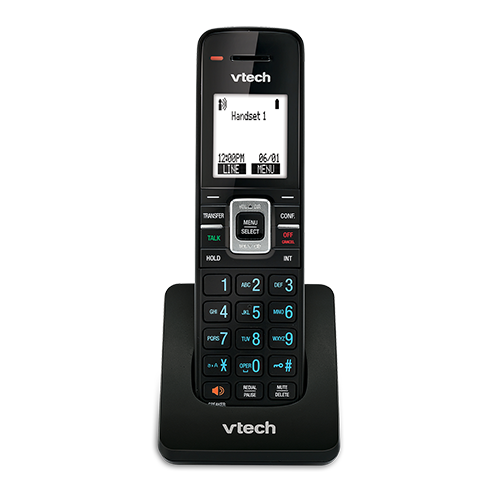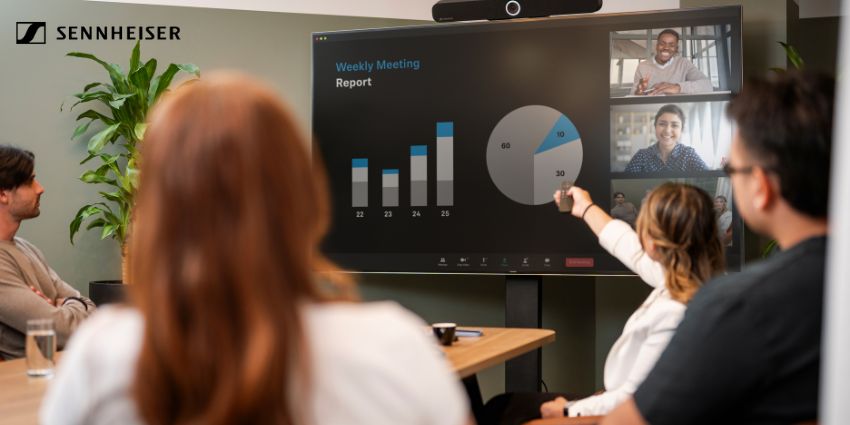Hong Kong electronics company VTech is nothing if not eclectic in its business model. Best known as a popular children’s digital learning brand, it is also one of the world’s top 50 electronic manufacturing services providers.
Just to put the icing on the cake, it is also the world’s largest manufacturer of wireless DECT telephones.
Despite the advent of mobile and more recently Wi-Fi telephony, DECT remains the go-to technology for cordless business phones, mainly because of the higher quality audio it offers compared to rival options.
The VTech VSP600A base unit is part of the company’s ErisTerminal SIP range, so offers plug-in compatibility with a full range of UC functions. Its main claims are that a single unit acts as a wireless base for up to six handsets, and acts as a high fidelity speakerphone when a handset is plugged into it.
In addition, when paired with the VSP605A repeater, functional range of the cordless handsets is dramatically increased way above the average for DECT phones.
Before we go any further testing out these claims, please remember that UC Today does not endorse any particular brand, nor does it play any role in marketing any products. Our reviews are entirely independent and aimed at bringing you, our readers, up-to-date information about what’s out there in the UC market so you can make informed choices with your purchases.
How Does It Look?
The VTech VSP600A is a pretty standard plug-in cradle typical of DECT base units – a small, flat black cuboid with a hollowed out docking port on top, simple VTech branding and 10/100 e

thernet ports at the back. It is wall-mountable for added convenience.
The VSP601A, the DECT handset compatible with the VSP600A, is a sleek, slimline modern looking telephone with a 90 x 65 LCD resolution backlit screen. It borrows from the now classic Nokia key layout, with a central four way navigation button plus green and red call and call end buttons in between the screen and number pad.
Finally, the VSP605A repeater, also in professional black, closely resembles a WiFi router, a slim upright flat box with a short antenna and indicator LED lights on the front.
What Can It Do?
The VSP600A supports up to six different DECT handsets and six different SIP accounts. Each phone can have its own separate extension or full number and operate as completely independent telephones through the same base, which offers obvious cost savings for the amount of hardware you need. However, if the full complement of six handsets are deployed, the unit can only handle a maximum of four calls concurrently.
The unit supports Power over Ethernet (PoE), keeping the need for wires to a minimum. When fully charged, each handset can operate for up to seven hours wirelessly without the need to plug them in.
With a handset plugged in, the base unit does indeed act as an excellent speakerphone with natural HD voice, although it functions only as half duplex, so parties have to take turns to talk and listen to carry on a conversation.
As well as high quality audio, the VSP601A handsets provide easy to access call management functions including call forwarding, blocking, transfer, hold and mute. There are paging and intercom options, and each handset includes a 200 entry directory. There is also call logging, call history and user ID support.
The VSP600A and 601A partnership really comes into its own when paired with a VSP605A repeater. A repeater increases signal range by untangling transmission and reception signals and sending them on their own paths, making them much more efficient. Standard DECT 6.0 phones have a maximum effective network range (the distance they will operate away from the base unit) of about 60 metres. The VSP605A increases this to 135 metres per repeater, and you can connect up to five repeaters to each unit.
What do we like?
It is difficult to look beyond the incredible boost in network coverage the VSP605A repeater gives. A range of more than 100 metres, with perfect audio and reception, means your DECT phone will work anywhere in a good sized office. And for really big premises, perhaps spread out over multiple floors, there is the option to stack up repeaters to extend the range further.
What could be improved?
Although the speakerphone function does give great audio, the fact that it is only half duplex is a drawback. Whereas full duplex means a device and receive and send simultaneously, allowing a conversation to flow naturally, half duplex only allows one at a time, which creates awkward little pauses as you try to remember to stop speaking so you can hear the other person.
Who is it for?
The whole VSP600 range is positioned as an entry-level DECT solution for the general office user. With the VSP600A base unit priced in the £60 range and each VSP601A handset in the region of £30, it represents a value option for small offices and places of work.
What is it compatible with?
As part of the ErisTerminal SIP range, the VSP600A is compatible with Asterisk-based PBX platforms, Broadsoft® and Genband™.
UC Today Opinion
The continued appeal of DECT in the office is down to the combination of mobility and quality audio. Instead of being stuck at a desk on a call with a corded phone, cordless gives the freedom to move around, fitting in with the fluid patterns of modern working.
The big selling point of the VSP600A is the huge boost it gives to mobility when combined with the VSP605A repeater. Here you really do have a DECT option which allows you to make and take calls anywhere in the office.
Without the repeater, the fact that you can run up to six handsets on each base station delivers good value, allowing small to medium sized businesses to deploy multiple DECT phones at relatively low cost.
Have you used the VSP600A? What is your opinion on the value it offers? How about the VSP605A repeater? How useful is the extra range? Leave your thoughts in the comments section below, and if you know someone you think might be interested, share this article with them too.







